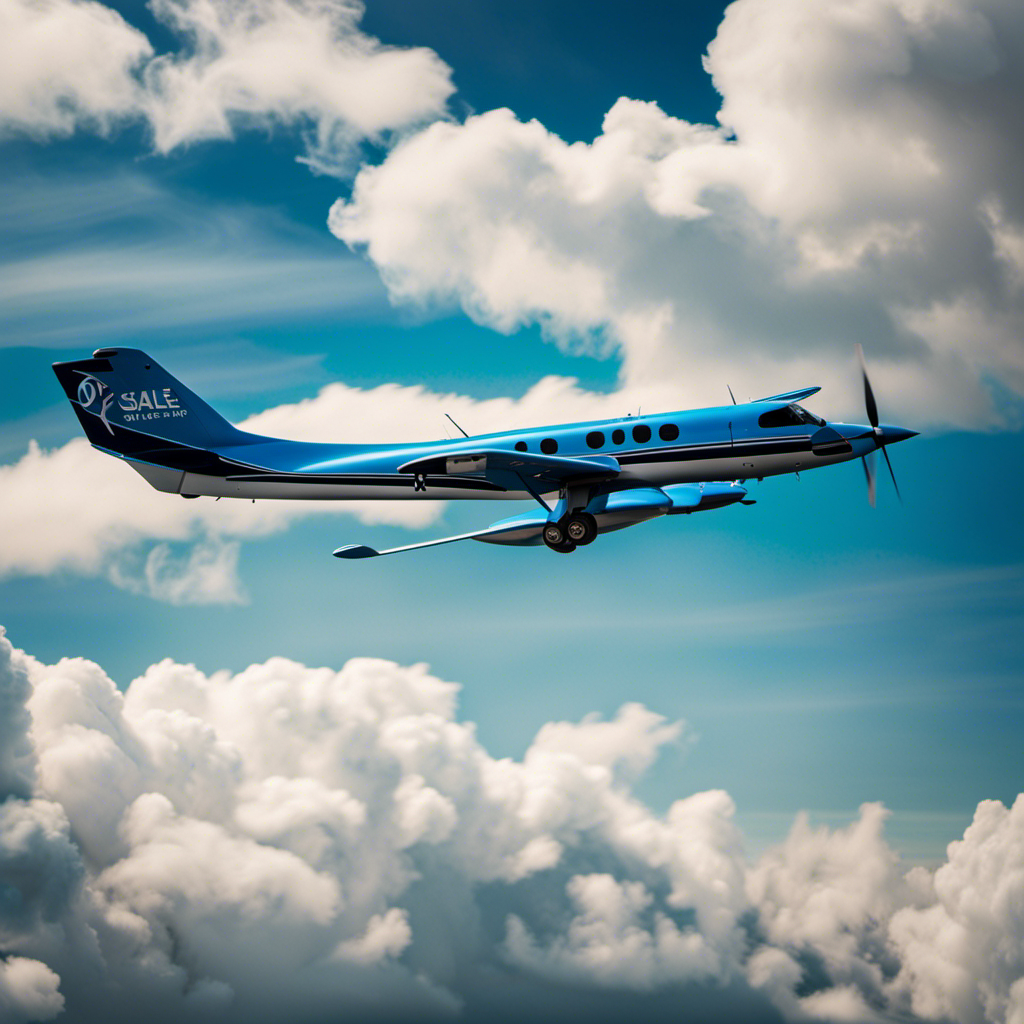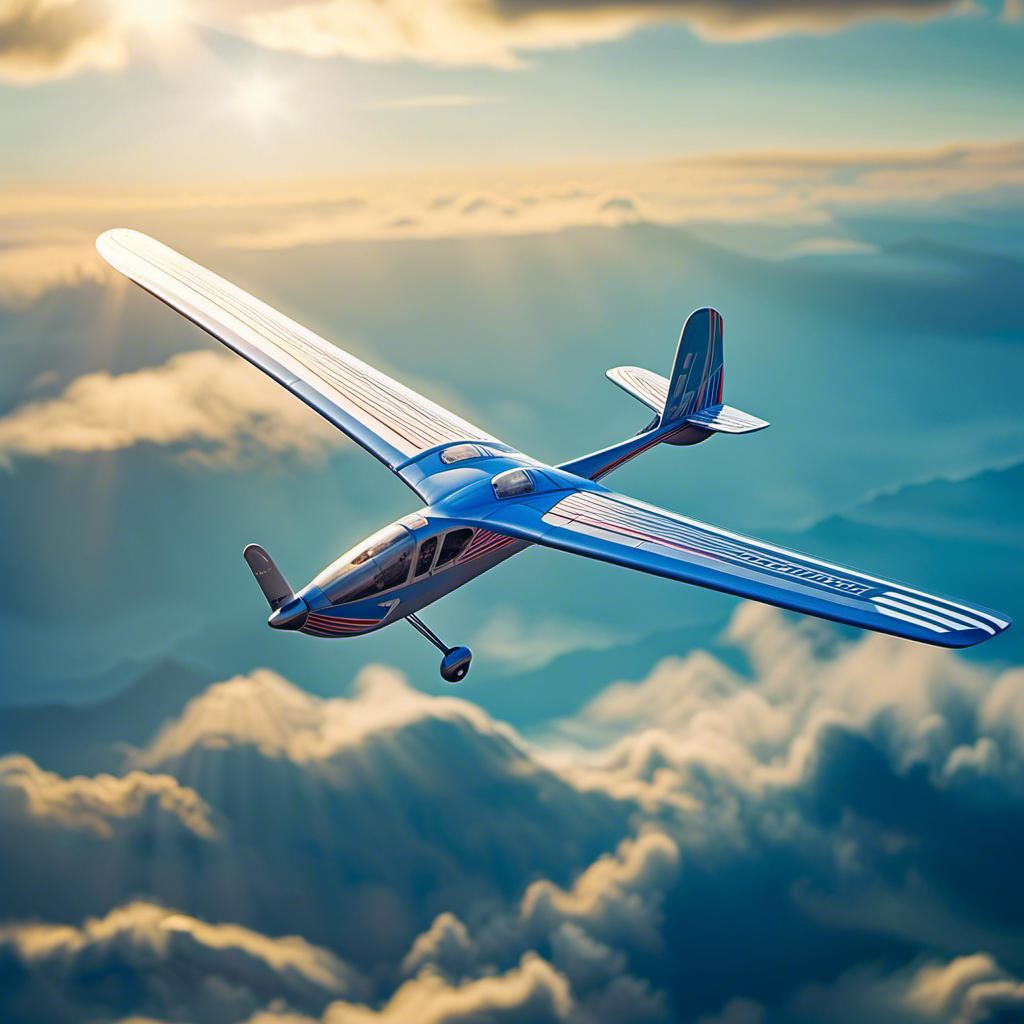As I soar through the air, the feeling of excitement and freedom envelops me. However, before beginning this exciting journey, it is essential to select the appropriate glider training program.
In this article, I will guide you through the process, providing essential tips and insights. By understanding the basics of gliding, researching various course options, and considering your skill level and goals, you can embark on a well-informed journey.
So, prepare for an unforgettable experience as we soar through the skies together.
Key Takeaways
- The location of the glider course is crucial, as it should have suitable airspace, ample landing areas, and good wind conditions for a favorable flying experience.
- Different regions offer diverse experiences, such as coastal areas for ridge soaring and mountainous regions for mountain flying techniques, providing opportunities for skill development in varied flying conditions.
- When comparing prices and payment options, flexibility in payment schedules, discounts or promotional offers, and the inclusion of necessary equipment and materials should be considered along with the reputation and experience of the course provider.
- Well-informed decision making is essential, involving gathering necessary information, weighing options based on course duration, cost, location, and instructor-to-student ratio, to ensure a smooth and enjoyable experience.
Understand the Basics of Gliding
To understand the basics of gliding, you’ll need to learn about airflow and lift. Gliding is the art of flying without an engine, relying solely on the forces of nature.
Airflow plays a crucial role in gliding. As the glider moves through the air, the shape of its wings creates varying air pressures. This difference in pressure generates lift, which allows the glider to stay aloft.
Understanding the principles of airflow and lift is essential for any aspiring glider pilot. By grasping these concepts, you will gain a deeper appreciation for the physics behind gliding and be able to make more informed decisions in the air.
Now that we have a solid foundation, let’s dive into researching different glider course options.
Research Different Glider Course Options
It’s important to explore various options when researching different glider courses. As someone who is passionate about aviation, I understand the significance of finding the right program that suits your needs and goals.
Here are three key factors to consider during your research:
-
Accreditation: Ensure that the glider course you choose is accredited by a reputable aviation organization. This guarantees that the curriculum meets industry standards and that you will receive quality instruction.
-
Instructor qualifications: Look into the qualifications and experience of the instructors at each course. Experienced and knowledgeable instructors can make a significant difference in your learning experience.
-
Course structure: Evaluate the course structure and content. Consider factors such as the duration, number of flight hours, and ground instruction. A well-structured course will provide a comprehensive learning experience.
Consider Your Skill Level and Goals
Evaluate where you are currently in your aviation journey and what you hope to achieve in order to determine the glider course that best aligns with your skill level and goals.
Assess your flying experience, whether you are a beginner or have some previous flight time.
Consider your ultimate objectives, such as obtaining a private pilot license or pursuing a career in aviation.
This self-evaluation will guide you in choosing the right glider course.
For beginners, a basic introductory course can provide the necessary foundation and knowledge.
Intermediate pilots may benefit from advanced courses that focus on specific skills and maneuvers.
If your goal is to become a certified glider pilot, you may need to pursue a comprehensive training program.
By understanding your current position and desired achievements, you can select the appropriate glider course that will propel you further in your aviation journey.
To ensure a successful learning experience, look for accredited and experienced instructors.
Look for Accredited and Experienced Instructors
When searching for a glider instructor, prioritize those who are accredited and have extensive experience. Having an accredited instructor ensures that they meet the necessary standards and have the required knowledge and skills to effectively guide you in your glider training. Experience is also crucial because it allows the instructor to have a deeper understanding of the intricacies of gliding and enables them to provide valuable insights and tips based on their own practical experiences.
Consider the following when evaluating an instructor’s credentials:
- Look for instructors who are certified by reputable gliding organizations.
- Seek instructors who have logged a significant number of flight hours.
- Consider instructors who have a track record of successfully training students to become competent glider pilots.
By choosing an accredited and experienced instructor, you can be confident in receiving high-quality training that will help you develop your gliding skills effectively.
Now, let’s move on to checking the course duration and schedule.
Check the Course Duration and Schedule
Now that you’ve considered the instructor’s credentials, let’s take a look at the duration and schedule of the course. It’s crucial to choose a glider course that fits well into your schedule and allows enough time to learn the necessary skills. If the course is too short, you may not get enough practice and repetition. On the other hand, if it’s too long, it may become tedious and lose its effectiveness.
In addition to the duration, consider the frequency and consistency of the classes. Regular and consistent training sessions are important to build upon each lesson and progress steadily.
By carefully assessing the duration and schedule of the course, you can ensure that you have ample time and opportunities to master the art of gliding.
Now, let’s move on to assessing the safety measures and equipment provided.
Assess the Safety Measures and Equipment Provided
Make sure to check out the safety measures and equipment that are provided to ensure a secure and smooth gliding experience. When choosing a glider course, it is crucial to prioritize safety. Here are some key points to consider:
-
Safety Equipment:
-
Verify if the course provides proper safety gear, such as helmets, harnesses, and emergency parachutes.
-
Ensure that the equipment is well-maintained and regularly inspected for any signs of wear and tear.
-
Ask about the availability of first aid kits and emergency response protocols.
-
Training Facilities:
-
Assess the condition of the training facilities, including the gliders, runway, and control tower.
-
Look for certifications or accreditations from relevant aviation authorities.
-
Inquire about the instructors’ qualifications and experience in glider flying.
-
Weather Monitoring:
-
Find out if the course has a system in place to monitor weather conditions for safe flying.
-
Ask about the procedures followed in case of inclement weather or unexpected changes.
Considering these factors will help you make an informed decision and ensure that you have a safe and enjoyable glider course experience.
Reading reviews and testimonials from previous students can further provide valuable insights into the course’s safety standards and overall quality.
Read Reviews and Testimonials from Previous Students
Check out what other students have to say by reading reviews and testimonials about their experiences with the glider course. Hearing from previous students can provide valuable insights into the quality and effectiveness of the course. Below is a table summarizing some of the feedback I found:
| Reviewer | Course Rating | Comments |
|---|---|---|
| John S. | 5/5 | "The instructors were knowledgeable and patient. I felt safe and well-prepared throughout the course." |
| Sarah M. | 4/5 | "The course material was comprehensive, but the scheduling could have been more flexible." |
| David L. | 3/5 | "The course was average. The equipment provided could have been better maintained." |
Considering these reviews, it is clear that the glider course has received positive feedback in terms of instructor expertise and overall safety. However, some students have expressed concerns about scheduling and equipment maintenance. Moving forward, it is important to consider the location and weather conditions when selecting a glider course.
Consider the Location and Weather Conditions
Considering the feedback from previous students, it’s important to take into account the location and weather conditions when selecting a glider course.
These factors can greatly impact your training experience and ultimately your ability to master the art of gliding.
The location should ideally have a suitable airspace, ample landing areas, and good wind conditions. The weather conditions play a critical role in determining the availability of favorable flying conditions, such as thermals and stable air masses.
Additionally, different regions may offer unique challenges and opportunities for glider pilots. For example, coastal areas may provide opportunities for ridge soaring, while mountainous regions offer the chance to practice mountain flying techniques.
Taking these aspects into consideration will ensure that you choose a glider course that aligns with your goals and maximizes your learning experience.
When it comes to comparing prices and payment options…
Compare Prices and Payment Options
To find the best deal for you, look into different price options and payment plans. When comparing prices and payment options for glider courses, it’s important to consider the following:
- Flexibility in payment schedules, allowing you to manage your finances effectively.
- Discounts or promotional offers that may be available, helping you save money.
- Inclusion of necessary equipment and materials in the course fee, ensuring a hassle-free experience.
- Reputation and experience of the glider course provider, ensuring high-quality instruction.
- Additional benefits or perks, such as access to exclusive flying locations or networking opportunities.
By carefully evaluating these factors, you can make a well-informed decision and start your gliding adventure.
It’s crucial to choose a course that not only fits your budget but also provides the best value for your investment.
Make a Well-Informed Decision and Start Your Gliding Adventure
When it comes to embarking on your gliding adventure, it’s important for you to gather all the necessary information and carefully weigh your options. Making a well-informed decision will ensure a smooth and enjoyable experience.
To help you in this process, I have compiled a table comparing the key factors to consider when choosing a glider course. This table includes information on the course duration, cost, location, and instructor-to-student ratio.
Frequently Asked Questions
Are there any age restrictions for taking a glider course?
There are no age restrictions for taking a glider course. Anyone can pursue this training regardless of their age. It is important to ensure that the individual meets the physical requirements for flying.
Can I bring my own equipment for the glider course?
Yes, you can bring your own equipment for the glider course. It is important to ensure that your equipment meets the necessary safety standards and is approved by the instructor.
Is there a maximum weight limit for participants in the glider course?
There is a maximum weight limit for participants in the glider course. It is essential to check with the course provider regarding their specific weight restrictions to ensure a safe and enjoyable experience.
Are there any medical requirements or restrictions for taking a glider course?
There are no specific medical requirements or restrictions for taking a glider course. However, it is recommended to be in good physical and mental health to ensure a safe and enjoyable experience.
Can I take a glider course if I have no prior flying experience?
No prior flying experience? Perfect! Our glider course is specifically designed for beginners like you. With our expert instructors and comprehensive training program, you’ll be soaring through the skies in no time.
Conclusion
In conclusion, choosing the right glider course is absolutely crucial for your journey to the skies. With so many options available, it can be overwhelming, but fear not!
By following the steps outlined in this article, you are on your way to becoming a gliding expert. From understanding the basics to considering your skill level and goals, researching accredited instructors, and reading testimonials, you can make a well-informed decision.
So, buckle up and get ready for an exhilarating gliding adventure like no other!
Orion, better known as “Jetstream,” is the voice that brings the stories of the skies to life. His fascination with aviation began at a young age, sparked by his father’s tales of flying and adventure. Orion’s journey into the world of gliding was serendipitous, and from the moment he took his first glider flight, he knew he had found his calling.










